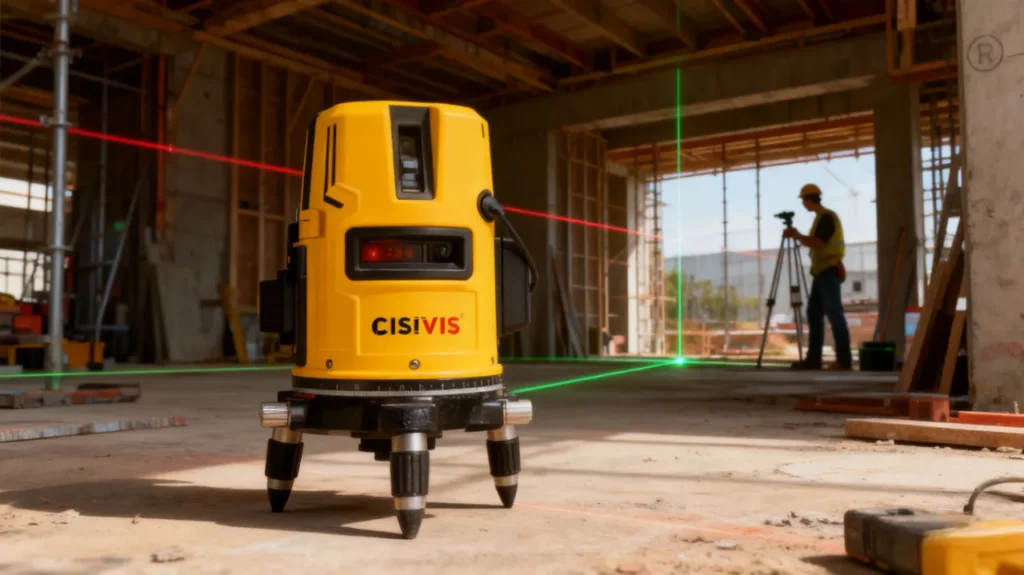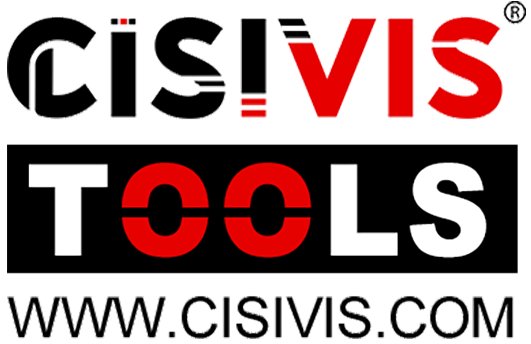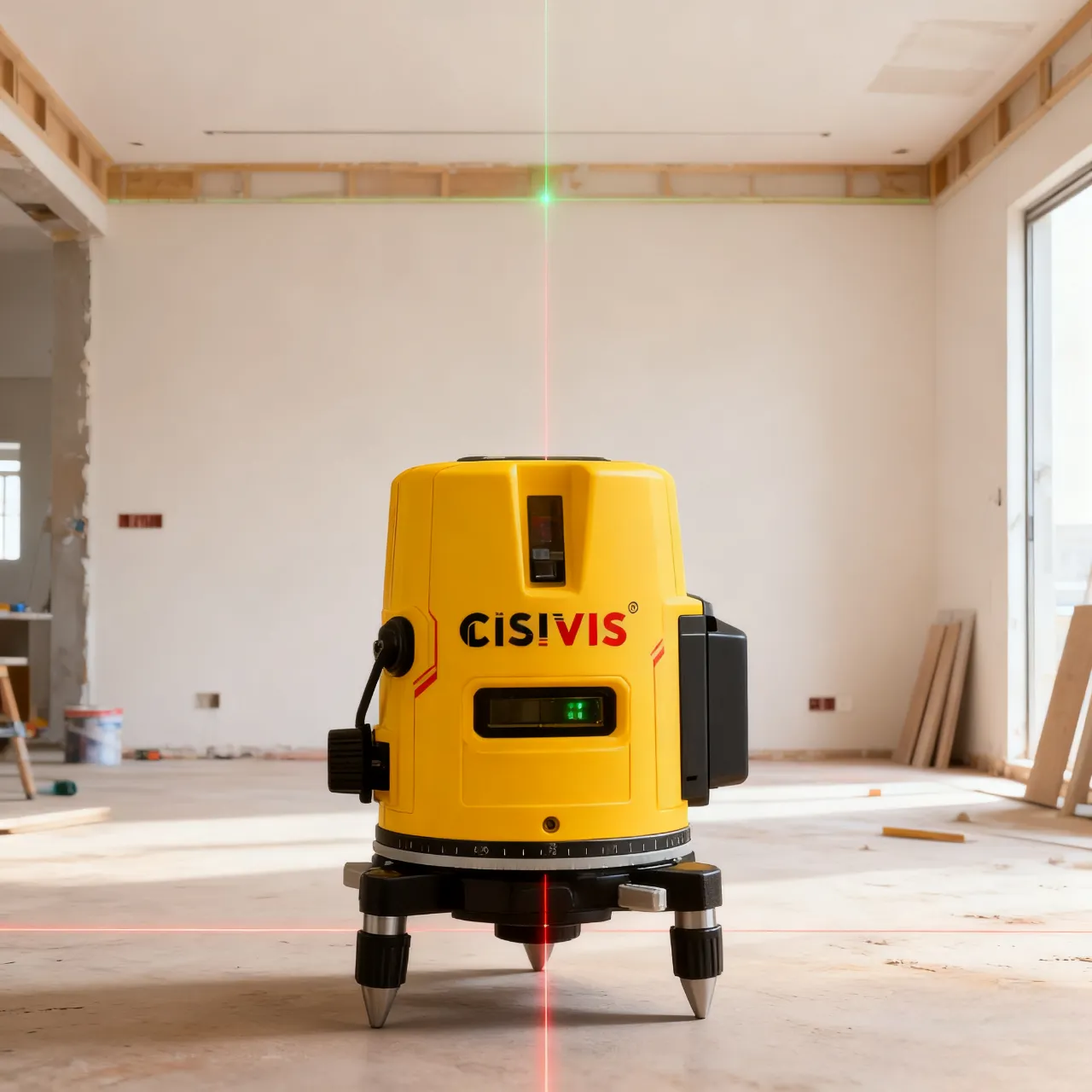Why More Professionals Are Switching to 360 Laser Levels — Technology, Cost, and Buying Guide for B2B Buyers Leave a comment
What Is a 360 Laser Level?
A 360 laser level is a measuring tool that projects a continuous laser line all the way around a room — a full 360-degree horizontal or vertical line. Unlike a traditional bubble level or a basic cross-line laser that only shoots one or two straight beams, a 360 laser level covers an entire area at once.
Imagine placing the tool on a tripod or table. With one click, it creates a glowing line across all four walls, giving you a perfectly level reference. Some models even project three full planes — one horizontal and two vertical lines — so you can create a complete layout grid across walls, floors, and ceilings.
This makes 360 laser levels a favorite among:
- Construction workers
- Electricians
- HVAC and piping installers
- Tile and drywall contractors
- DIY users who want perfect alignment
In short, if you need fast and accurate leveling in every direction, a 360 laser level saves time and reduces mistakes.

Latest Technology, Typical Cost & Industry Trends (with Real Data)
🔧 Technology Improvements
Modern 360 laser levels now include:
| Feature | Benefit | Notes |
|---|---|---|
| Green Laser Beams | Up to 4x brighter and easier to see than red lasers | Ideal for outdoor or bright rooms |
| Self-Leveling System | Automatically adjusts itself within ±4° | No manual calibration needed |
| Multi-Plane Projection | Projects one or three full 360° lines (horizontal + verticals) | Enables full layout without repositioning |
| Bluetooth / App Control | Some high-end models can be controlled from a phone | Useful for solo workers |
| Dust & Water Protection (IP54–IP65) | Can handle job site dirt and rain | Required for professional use |
💰 How Much Does a 360 Laser Level Cost?
| Type | Typical Price | Example |
|---|---|---|
| Entry-Level DIY | $50 – $120 | Harbor Freight 50 ft Self-Leveling Laser |
| Mid-Range Professional | $150 – $400 | Bosch GLL3-300 (around $341.97 at Home Depot) |
| High-End Rotary / Survey Grade | $500 – $2,000+ | Full-size rotary levels used outdoors |
→ Source: Home Depot listings, Harbor Freight, HowStuffWorks (“Most rotary laser levels cost $250 to over $2,000”).
📈 Market Growth & Industry Trend
According to Market.US, the global laser level market was valued at $590.7 million in 2024 and is expected to reach $944 million by 2034, growing at a 4.8% CAGR. Precision models like 360 laser levels are among the fastest-growing product types, especially in construction, renovation, and home improvement retail.
More contractors are replacing bubble levels and cross-line lasers with 360 models because they:
✅ Speed up installation
✅ Help avoid rework
✅ Work for both layout and quality inspection
When Is a 360 Laser Level the Right Choice — and When It’s Not
Buying a 360 laser level is not just about what job you do — it’s also about how often you use it, how much time it can save you, and whether the cost makes sense.
Let’s look at it from a real buyer’s perspective:
| Situation | Best Choice | Why |
|---|---|---|
| You work professionally in construction, renovation, drywall, carpentry, or electrical installation | ✅ 360 Laser Level | You use a level every day — saving 10–20 minutes per job quickly justifies a $150–$300 tool. |
| You install ceilings, pipes, cabinets, or tiles across multiple walls | ✅ 360 Laser Level (3-plane model preferred) | Full-room coverage reduces repositioning — smoother workflow & fewer mistakes. |
| You’re a DIY user doing home upgrades once or twice a year | ❌ Cross-Line Laser ($50–$80) | A full 360 model would sit in a drawer most of the time — no need to overspend. |
| Your work is outdoors over long distances (landscaping, grading, fencing) | ❌ Rotary Laser Level | Rotary models pair better with receivers and are visible at 200–500 ft, while 360 line lasers fade in sunlight. |
| You only need to check if one surface is level (shelf, picture frame, single wall) | ❌ Bubble Level or Small Line Laser | Spending $200 for a small job makes no sense. |
| You have apprentices or multiple workers who may not align properly by hand | ✅ Auto-Leveling 360 Laser Saves Training Time | Reduces human error — just set it down and go. |
| You want to look more professional to clients | ✅ 360 Laser = “Pro Image Upgrade” | Customers notice good tools — helps win trust and close jobs. |
👉 Simple rule:
If accuracy + speed = money for you, then a 360 laser level is an investment, not a cost.
If you only level occasionally, go cheaper.
What Types of Laser Levels Do Hardware Stores & Supermarkets Buy?
For B2B wholesale buyers such as hardware stores, supermarkets, and tool distributors, the best-selling ratio usually looks like this (based on data from U.S. retailers and our own customer sales reports):
| Product Type | Share of Total Orders |
|---|---|
| Cross-Line Laser Levels | 40–45% (Best-selling entry model) |
| 360 Laser Levels (Single Plane or 3-Plane) | 30–35% (Fastest-growing category) |
| Rotary Laser Levels | 15–20% (Construction professionals) |
| Bubble / Spirit Levels | 5–10% (Still popular for low-budget customers) |
👉 If you are a B2B buyer, you should always include 360 laser levels in your catalog, especially green beam, self-leveling types — they offer higher profit margins and attract more professional customers.
Conclusion
The 360 laser level is no longer just a “high-end tool” — it is becoming standard equipment for anyone in construction or home renovation. With new features like green lasers, auto-leveling, and multi-plane projection, these tools are now smarter, more accurate, and more affordable than ever.
👉 CISIVIS is a professional power tool wholesaler offering a full range of laser levels, from cross-line to 360° green beam models.
We support OEM & ODM customization — perfect for brands, retailers, or hardware distributors looking to expand their laser tool lineup.



